-
Posts
2.067 -
Joined
-
Last visited
-
Days Won
52
Posts posted by Genava55
-
-
26 minutes ago, Lion.Kanzen said:
Duron is the market?
Yes, often the Romans have translated the toponym "-duron" in place and in forum. It is the only thing that is the closest to the word "market".
Edit: to be more precise, the oppida are mainly places of trading. It is why the name "duron" is translated for a lot of things, including fortress. But it doesn't make any sense when you look to the latinized versions and when you try to understand "duron" as a fortress only. For example there is "Salodurum", you can interpret it like Salt fortress or like salt market. In the opposite, "Dunon" is less ambiguous.
-
@stanislas69 @Lion.Kanzen @wackyserious
I made a short overview of buildings during La Tène period:
https://www.docdroid.net/1njBPhO/gauls-architecture.pdf
I didn't have a lot of time these days, I will try to do something similar for the weaponry.
-
 1
1
-
-
2 hours ago, Sundiata said:
You seem to be right... This publication http://archiv.ub.uni-marburg.de/diss/z2000/0093/pdf/dms.pdf ? It does indeed talk about runden schildbuckel and not rundschild. Interesting...
Yes, this one. It's the thesis.
2 hours ago, Sundiata said:Yeah, a lot of misconceptions and inaccuracies are spread through popular culture like games and movies and even mistranslations or misinterpretation of academic sources like we see here. Thanks for pointing it out, and taking your time to explain. That's one of the reasons why I like 0AD so much, because people here at least try to keep it as historical as possible, but as you can see, it's a work in progress.
Thank you for your message. The misinterpretation is normal since the knowledge is not free and accessible. There is only a few peoples that are doing historical mistakes with a bad intention behind. I don't have a grief against good peoples doing mistakes but against scientists that often didn't share their works. It is why I'm a huge supporter of science hub and affiliate platforms. Especially since I went to poor countries where students didn't have access to a good library. Osprey is often the only accessible source for amateurs but their work is sometimes of mediocre quality.
2 hours ago, Sundiata said:What are your thoughts though on some of the (obscure) coins seemingly depicting round shields?
Well it is very difficult to interpret anything with coins without a complete series of the same coins. One classical example with a coin of Cunobelin that was described as showing a round shield even by someone like Cunliffe. But when we look in details is it really obvious that it is a round shield? I don't know. When I look to another coin of this serie, the shape of the shield is clearly less obvious. Then how to be sure that it is not an artifact from the coin's matrix? The difficulty for this coin of Cunobelin is the rarity. There is not a lot in circulation. It is the same problem with the coin of Tasciovanus (2nd one) where Cunliffe see a rectangular shield and where the others coins seems to tell a different story. The coins of Epaticcus are a good example of similarity with the Cunobelin coins and they have some variations too.
This coin is more difficult, it is a Caesar coin dated of 48 BC.
Spoiler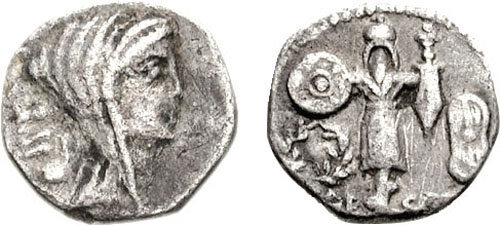
The problem is that all gallic coins from Caesar are showing a carnyx. It is not the case here.Spoiler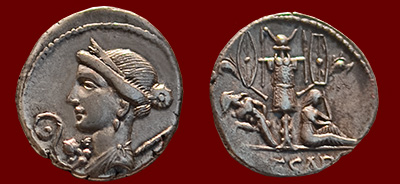
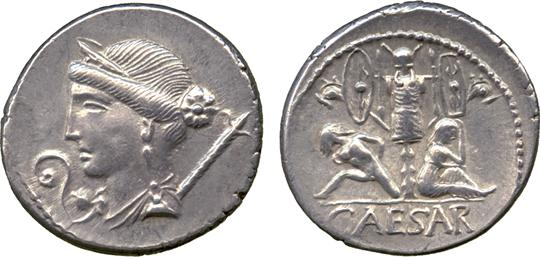
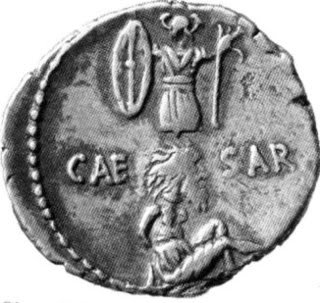
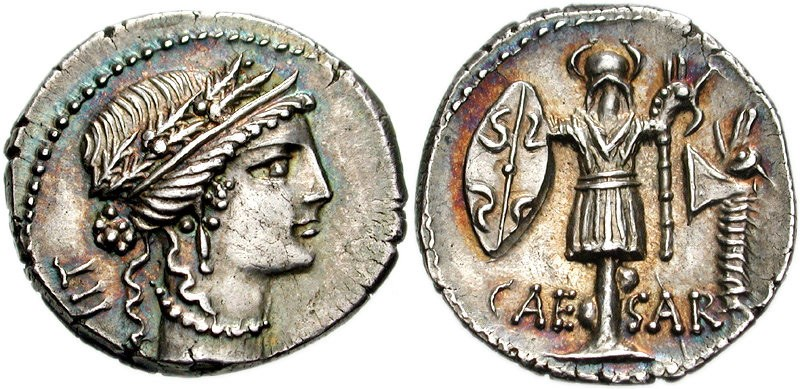
And there is spanish and roman coins from Caesar:
Spoiler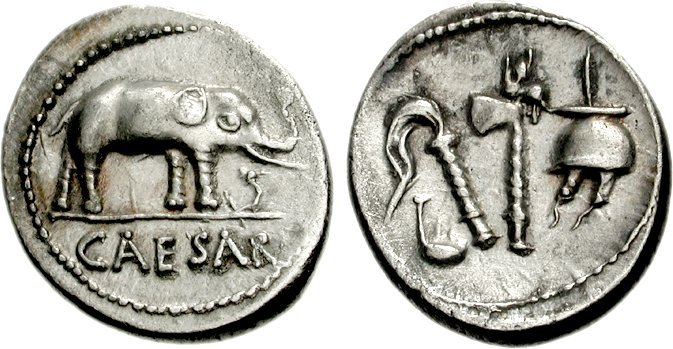
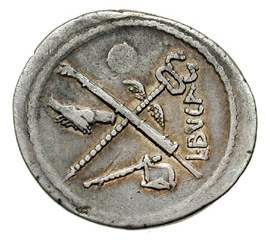
And the shield is the same that this one used for Juno Sospita:
Spoiler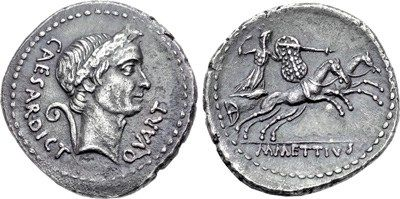
Thus I am skeptical.
-
 1
1
-
-
4 minutes ago, stanislas69 said:
@Genava55 Might be a weird question but since you mentioned the Rome I mod having traitors in their ranks if I might say can you tell us a bit more about your references ?

Sure. I am an environmental scientist with a specialization in geochemistry. I am not a historian neither an archeologist. I have some basic academic knowledge in archaeology because I had some courses about paleo-ecology, paleo-geomorphology and paleo-geochemistry in Holocene context. Ancient history and La Tène culture are an old hobby I have since my teenage years. The only thing very useful in my academic background is mostly that I know where to look for accurate information.
QuoteMaybe you could put up a thread with all the incorrectness of the current Celtic factions with screenshots saying what is innacurate ? Also maybe update the design document for those civ and give some way of improvements.What do you think ?
i love those endless discussions about history but I also like productive talking
 here in the form of making 0AD better.
here in the form of making 0AD better.
When I got the time, I will. For the moment I have a break because I'm waiting for my results from a laboratory before to continue my research.
-
 1
1
-
-
2 hours ago, Sundiata said:
A vague yet direct reference to a round shield from the 1st century BC Gauls at Agen. As I said, actually finding intact shields from this period is very hard, no matter the type, but apparently a round shield has been found in a La Tène context at Agen.
This one made me laugh, but not because of you. I tell you why. I already got this discussion a few years ago and someone point me out a post on a thread in the forum kelticos.org. Someone find this press resumee/summary in french and translated it with google. It is true, clearly it mentions a "round shield". Problem, at this period it was very hard to find anything on internet about this discovery. I wanted the publication to verify this because I find it very exciting. Finding a round shield at the end of the Gallic Wars is just amazing and can tell you a lot of things about the weaponry evolution. Contrary to the common belief, there is very few indications of round shields in central Europa at this period, the only ones comes from very far in Poland and Baltic regions. There is small square shields in Jutland, in North-eastern Germany and in Ireland, but nothing that tell you why the round shields become so popular among Germanic tribes during the migrations period. Even during the Marcomannic Wars there is no evidences of round shields. For exemple, in the Thorsberg moor's votive site where there is offerings from 0 to 500 AD, the round shields start to appears only during the 3rd century. Thus for me, this discovery of a round shield in a post-Gallic Wars context was just amazing. Then I took my @#$% to the archeological library of my University. I asked for the 2004 publication of Schönfelder on this tomb and for his original thesis in German from 2000. Since I am from Switzerland, it took one month to get these documents, and do you know what I found? Simply that the person writing the press summary for the city of Agen had misunderstood the findings. It was round umbones. Not round shields. The original thesis conclude on the paragraph about the shield: "Nach den verbliebenen Fragmenten war der Schild von Boé ein gängiger, funktionaler Spätlatènetypus, wie er etwa auch in den Gräbern von Pîtres im Département Eure und Mainzweiler im Saarland gefunden wurde." Meaning it was a common and functional shield similar to two others findings in Gaul. But imagine my frustration to have waited one month and lose two days to read the material in German (not a common language for me). It is why I'm not referring anymore on anything that is not grounded by a publication.
You don't imagine the mistakes that appears with this kind of situation. For example, the first mod Europa Barbarorum I, on the first Rome Total War. All the barbarians factions were build using medieval irish tales and the delirium of someone that said he was a historian. Peoples working on Roman and Hellenistic histories, peoples with real knowledge, didn't even realize that an impostor was working on the Celtic factions. Someone who suggested two-handed swordsman, Giant hammer warrior and Irish heavy infantryman with scales armor. Even these peoples believed his information on word. Since the first mod was considerate very historical accurate, peoples took inspiration from their work. It is why you can find some two-handed swordsmen in 0ad. But this thing doesn't exist anymore on the second Europa Barbarorum. You can barely recognize the barbarians factions between the two mods. Because now, the team is very very careful when they are selecting someone for the mod.
3 hours ago, Sundiata said:Nice quotes, but I don't understand how they refute what I said... I said Belgic influence in Britain begins in the 2nd century BC (perhaps not 200 BC, but 120 BC is still 2nd century BC...). I also indicated that La Tène style probably predates Belgic influence. The point is that La Tène came from the mainland...
It was a precision about the Belgians. And the shield wasn't found in a context with what they call "Aylesford-Swarling" culture related with the Belgians. Thus, I didn't consider the find as related with the mainland Gauls. Moreover, the second quote about the La Tène style is what is interesting about the question because clearly this kind of style used on the shield is clearly native to Britain. It is an inspiration from what the mainland celts did. But these findings, with highly decorated shields and mirrors, with this plastic La Tène art, are not known outside of Britain. And as I said, I don't understand why people are referring about this shield as a round shield since it was clearly riveted on something. And there is a couple of shields totally preserved in Britain but none are round.
3 hours ago, Sundiata said:Maintaining the round shield for skirmishers was just a suggestion to differentiate them from the more prestigious noble warriors or dedicated warrior classes carrying oval/hexagonal shields in-game. I was obviously referring to the more complicated and ornate oval and hexagonal Celtic shields more commonly depicted, often with umbone, as opposed to what non-nobles would have used. The Celtic round shields depicted in historical reconstructions and seen among the Golasecca and Castro cultures are clearly smaller than the oval and hexagonal types. They use less material and are less cumbersome to put together simply because they're smaller. Not a paralogism, just common sense. That having said, I'm not opposed to wicker shields...
I was maybe a bit rough by saying it is a paralogism. I don't say it is not common sense and logical. It is just that we are, us the moderns peoples living in an industrial world, efficiency focused in our way to think. By the example of the use of rounds shields in celtiberian and italic cultures, I wanted to express something I have maybe misaddressed: the traditions for the use of weapons need to fit the cultural view of warfare. The round shields were used because these peoples wanted to use round shields. There is innovation in barbarian cultures, but they are always grounded with military and cultural changes. For example, the Gallic sword is getting longer from 300 BC to 30BC. Why? Because the elites warriors evolute slowly from an infantry and chariot based warfare to a cavalry based warfare. Because it is simultaneous with an increase of horse in warrior burials and the horses were becoming bigger. Furthermore, the sword tip were sometimes rounded in warrior burial. It seems that the elite warriors were more often on horses than on foot.
About the oval shields without umbones, there is evidence even in very late reliefs like this one:
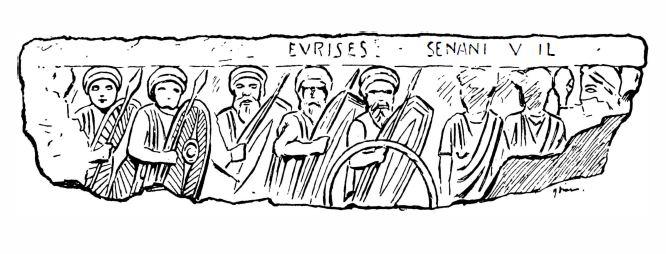 3 hours ago, Sundiata said:
3 hours ago, Sundiata said:That's 2 centuries, as I said, not a few decades. Regional evolutions might have happened fast, but that doesn't mean La Tène became uniform across Europe with a snap of the fingers.
Oh sorry, this paragraph is referring about La Tène evolution. For the the Hallstatt-LaTène boundaries (550-450BC), it is a more complex talk because it is based on the destruction and the desertion very sudden of several aristocratic places. There is also burial practices change during this moment. Notably, there is a huge increase of weapons in the more modest burials. The society seems to change from a peaceful to a warfare oriented society. But it is very complex because there is a regional origin proposed for this sociocultural process (the Marne region) and it seems it spread rapidly from this place. But in this region, the evolution from Hallstatt to LaTène was a bit more slower (and a bit more older).
3 hours ago, Sundiata said:Also, standardization in craftsmanship doesn't mean uniformity in distribution of equipment. The way equipment is distributed is not equal across the Celtic world, not even in La Tène period. There were clear and noticeable differences between those Celts living close to the Mediterranean, vs the ones in the interior, vs the Belgae vs the Britons. Environmental differences, accessibility to raw materials, proximity to non-Celtic groups, etc, result in differences in material culture, even if they were wearing the same helmet or whatever.
There is regional specificity but they are more subtle. The Britons are clearly different because it is not admitted they are from a La Tène culture for most of the british historians. There is clearly a connection because it was the Golden Age of the mainland Celts and everybody started to use their weapons, potteries and crafted items (it is why we can found La Tène items in Jutland and in Ukraine). The Britons have different burial practices and different architectures. The La Tène burials and architecture were only found in the Arras culture in the eastern part of Yorkshire. It is why some british historians are very opposed with the old Franco-germanic theories of La Tène spreading by invasions. Their views are more based on acculturation. The first time I read the book of Cunliffe about Iron Age in Britain, I was surprised how it is different from the common view of the french literature. I think there is a language barrier for the old historians that is hard to overcome. Cunliffe is very bad when he is writing about central European findings and french historians like J.-L. Brunaux are very bad for the british findings. Gladly, it is changing thanks to young peoples.
4 hours ago, Sundiata said:My point from the beginning is that they were actually similar enough, to draw inspiration from various mainland Celts to create the Gallic faction in 0AD, e.g. round shields are ok (they just shouldn't be overly prominent)...
And it is why I'm saying that the use of weapons are more based on cultural views. For me, saying the Golesecca culture could have transmitted the round shield to the La Tène culture by the same time they got dominated and their culture disappeared is weird. There is regional specificity of the Italian group and there is survivance of pre-La-Tène culture in some place. Even during the Roman Republic. But all the time, the specific findings were found in this place. Never outside their sphere. They are a minor and dominated culture, how they could influence another culture in his golden age? For example, in Giubiasco there is a warrior burial with a helmet that seems anachronistic for the period. The warrior is even equipped with a La Tène shield and a Roman gladius. It is known that this place show some survival of the Golesecca culture and some Lepontic unknown culture. The region was never been densely populated before the Roman Empire. Even during the Roman period, when they are officially controlling the region, you can find warrior burials with mainly La Tène items. Because, I will quote a blond modern politician, this is a "shithole country". Besides the joke, the region is really weird for historical findings, always a bit disconnected of the rest of the world.
Thus even by considerate the exceptional findings and the rare survival of previous culture, I don't see anything that could have spread into the La Tène culture. It stays always in a local scale. I'm really trying to understand this view for common bilateral cultural sharing of warfare items. But I don't have any example that fit in. Even in the Balkan where there is a huge mess and patchwork of different cultures at this period. More often there, the cultural sharing of warfare items is unilateral, i.e. peoples are starting to use La Tène items.
For your pleasure, here the Giubiasco warrior.
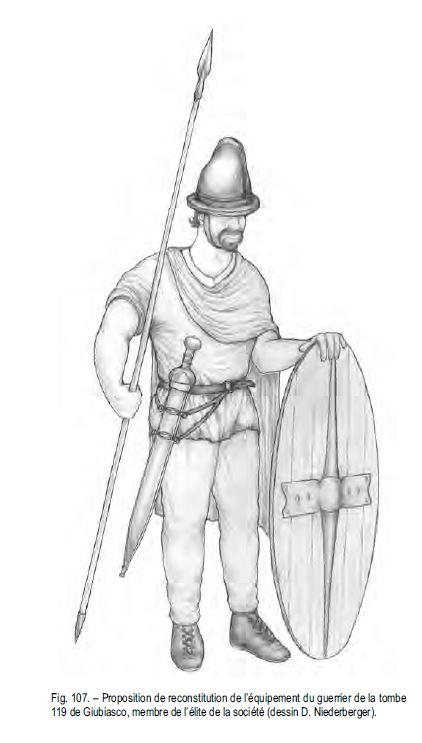
-
 2
2
-
-
1 hour ago, Sundiata said:
Actually it's not. That particular Shield is dated to the 2nd century BC, and Belgic influence (even settlement) is proposed to begin around 200BC, only becoming more explicit during/after the Gallic wars. But that's kind of besides the point. My point was that it's in La Tène style, which is Celtic, and that style does indeed predate the Belgic influence (we think). Either way, La Tène culture originates from the mainland...
As you wish, let me quote someone more qualified than me:
QuoteThe most prolific group of imports came from Belgic Gaul, roughly the area between the Seine and the Rhine, and were found concentrated in south-eastern Britain. These were called Gallo-Belgic and were divided by D.F.Allen into six types, A–F which, he believed, reached Britain in a series of waves between c. 120 and 50 BC (D.F. Allen 1961a). The belief that these waves represented successive bands of invaders was further elaborated by C.F.C. Hawkes (1968). Both writers accepted that Gallo-Belgic A–D coins were brought to Britain at different periods before Caesar’s invasions, Gallo-Belgic E roughly dated to the time of the Gallic War and Gallo-Belgic F reflected a later incursion led by Commius about 50 BC. An alternative view was put forward by Kent (1978) who saw the first wave as Gallo-Belgic B reaching Britain in the early first century BC, followed by A and C arriving at the same time as Gallo-Belgic E which is now widely believed to be the coinage used by the Belgic confederacy to wage war against the Romans in and after 58 BC (Scheers 1972).
- Cunliffe, Barry W. in Iron Age Communities in Britain.And for the La Tène style, yes indeed. But the La Tène style is used in Ireland too for decorating several scabbards. It doesn't mean they are peoples coming from the mainland. Actually the La Tène style was brought in Britain during the fifth century BC, probably by the trades or by a minor migration in the eastern part of Yorkshire. You can find La Tène items everywhere, from the Jutland to Ukraine.
QuoteMuch has been written on the problem of British La Tène art and its relationship to Continental styles. De Navarro, basing his work on the scheme created by Paul Jacobstahl, divided the British finds into four styles which he numbered I–IV. This terminology has been revised by Stead (1985b) who has extended it by adding a Style V. Stead’s scheme provides a simple classification which helps to place individual pieces in a broad chronological context. Style I is characterized by motifs of recognizable Greek ancestry incorporating palmettes flanked by lotus flowers. Few objects decorated in this style are known in Britain. The scabbard from Minster Ditch, near Oxford, with its somewhat halting attempts at a flowing pattern (Figure 17.22), is close to the early Continental style though evidently of local manufacture, but by far the most impressive of the early British pieces is the scabbard of a dagger found in the Wisbech area, Cambs. (Figure 17.23). It is decorated in the rocked tracer technique with a palmette flanked by lotus petals or lyres. The same motifs, though in more elaborate combinations, decorate the flange of a bronze lid from a cist grave at Cerrig y Drudion, Clwyd (Stead 1982). This last item is particularly interesting in that it may be an import; such pieces would have inspired native craftsmen, like those who made the Minster Ditch and Wisbech scabbards, in their experiments which created the first insular La Tene art style in Britain.
- Cunliffe, Barry W. in Iron Age Communities in Britain.
1 hour ago, Sundiata said:I Never said it was regularly used. There seems to be a contradiction in what you wrote. How can it never be used by skirmishers, and used by all the warrior classes at the same time? And what about warriors that simply can't afford a sword or even a spear?? Javelins, slings and a simple wooden (round) shield are way more accessible than metal weapons or the more complicated and ornate (therefore more prestigious) Celtic oval shields. The Celtic oval/oblong shields depicted in Roman art are clearly ornate spoils of war, and not necessarily indicative of the equipment used by peasant levies, for example.
You missed my point. I wanted to highlight the fact that round shield were never used by only a class of skirmishers but by the whole warrior class. And I don't understand why a oval shield should be more complicated or more ornate, neither more expensive, to produce. In these cultures, even the elite warrior were using round shield. I think the practical argument that the round shield is better for skirmishing is a paralogism. The argument that the round shield is less expensive and more affordable is a paralogism too. An oval shield doesn't need an umbone, and this piece is the most expensive part. If we want to make a really affordable and cheap shield, why not making something that is proved by some sources, like the wicker shields mentioned in De Bello Gallico.
1 hour ago, Sundiata said:Interesting read... Should take my time to read through it again more thoroughly, but I didn't read anything relevant to the discussion on round shields, neither anything about a sharp or sudden break from Hallstatt Culture, but rather a gradual expansion across Europe that may have lasted as much as 200 years, not decades.
There is this particular point about weaponry I wanted to show:
Quote"The vitality of Celtic societies in the fourth and third centuries is expressed by the standardization of craftsmanship, particularly where anything to do with adornment, instruments of war,and symbols of power such as chariots and helmets are concerned. This gradual homogeneity varied depending on a given object’s purpose. For adornment, it was partial inasmuch as the elaboration and development of such items obeyed sartorial practices that differed from one community to another or according to specific social groups: this was the case particularly with torcs and annular jewelry, which, as has been demonstrated for Champagne and the Middle Rhineland, enabled distinct regional features to be defined.This homogeneity, already relatively marked in the case of fibulae, is even more pronounced when it comes to arms and decorative detail. This is because these groups had a common ideology of war and shared beliefs.It is one of the major cultural features that created the unity of the La Tene Celtic world over and above tribal and political divisions. This process, which distinguished the elites and partially affected the production of consumer goods, was certainly not new. What changed in the fourth and third centuries BC was that standardization gained greater ground than ever before; the same standards could now be found from one end of Europe to the other, from the Atlantic Ocean to the shores of the Black Sea." [...]
[...] "For an idea of the scale of standardization, it is sufficient to examine the distribution not just of personal items (for example, the copper alloy fibulae from Duchcov or Munsingen,or short swords that have scabbards with openwork and rounded chape ends,which are typical series from the last two-thirds of the fourth century BC), but also the sets of weapons, combining a sword (complete with scabbard and suspension system), a spear, and personal shields, which have been found in lands separated by several hundreds or thousands of kilometers.The patterns, more symbolic than ornamental, in an escutcheon arrangement — such as zoomorphic lyres on a textured background — that were reproduced identically on certain swords of similar shape and design found in France (Champagne, Languedoc), northern Italy, Hungary, and even Britainalso give another idea of the scale of standardization."
https://www.cairn-int.info/article-E_ANNA_672_0295--the-golden-age-of-the-celtic-aristocracy.htm
You said I was oversimplifying ?
-
Quote
The Wandsworth shield is indeed associated with the Cantiaci, but that area is within the Belgic sphere of influence. Either way, my point is that they were Celts, and that they probably used round shields. Considering the proximity and interaction with Gaul, that isn't trivial. Again, I'm not saying it's absolute either.
Actually, the Wandsworth shield is dated before the beginning of the belgian influence in Britain.
QuoteNot only... Round shields were used by the Celts of the Castro Culture (during the Iron Age), by the Celts of the Golasecca Culture (during the Iron Age) and by the Celts of the British Isles (during the Iron Age), as well as by other contemporaries they regularly came into contact with, like Italics, Greeks, non-Celtic Iberians, Germanics...
Well there is a problem with considering the round shields as something regularly used by La Tène skirmishers and in the same time justifying it from Castros, Celtiberian and Italic cultures. Because in these cultures the round shields were never used by skirmishers, it was used by all the warrior class. It was a common shield used by warriors using javelins, spear and sword to fight in close combat. They are not skirmishers.
The only proofs of a standardization of the round shield to only the skirmishers are from the Roman velites and the Hellenistic peltasts/javelinists. Even for the slingers, most of the Mediterranean slingers never used a shield. For the Roman, the justification of the parma for the velites comes from the weight and the size of the scutum. But it is known that most of the imperial auxilia used an oval shield, even for skirmishing, because it is still lighter than the scutum. Therefore, why a round shield should be mandatory for skirmishing?
QuoteGallic archers aren't depicted anywhere to my knowledge either, but they are still mentioned in de Bello Gallico. Slingers are not depicted either, but we know they used them from the piles of "sling-bullets" found at Celtic fortifications. You wouldn't expect to find wooden shields of this period intact either, further compounding the question.
For the simple reason there was no united formation of slingers and archers. Archers were used only during the Gallic Wars by Vercingetorix but never before. The archeological record of arrows in La Tène battlefield only start with the Gallic Wars. There is a huge increase of traits weapons during this period (stones and javelins mostly). But before this moment, there is no indication of specialized archers. For the slingers, the most probable is a common weapon used inside all the celtic society. The stones from slings are mostly found in siege battle, therefore it is hard to know who have throw it against the enemies. It could be regular warriors too. Cuchulainn in the irish tales used regularly a sling, thus no reason to think it was forbidden for the warrior class.
QuoteI understand that these are all distinct cultures, but there is also clear continuity (also in material culture).
There is actually a very sharp transition between Hallstatt and La Tène culture, even in the same archeological region. The weapons changed a lot in a few decades. And if there is that much survival from the previous culture, why the innovation in the La Tène weaponry are spreading so fast all the time? There is typology for the sword, the scabbard, the umbones and the helmets, with specific period when they were used. Not a bunch of mixed innovation accumulated through several centuries and across different iron age culture.
https://ibb.co/ke4vHy
https://ibb.co/hS7FHyhttps://www.cairn-int.info/article-E_ANNA_672_0295--the-golden-age-of-the-celtic-aristocracy.htm
-
In my opinion there is no trouble to distinguish between Insular Celts (Britons) and Continental/Mainland Celts (Gauls) while keeping them in the same group/faction. It is true that Celtic culture doesn't mean La Tène culture, but Celtic cultures are very diversified on a large timescale. The peoples from the Atlantic Bronze Age and from the Urnfield culture are actually proposed as the first Celts to explain the differences between the Iron Age Celts (There is a book about this: "Celtic from the West"). Then all the following cultures (Castro, Hallstatt, Golasecca, La Tène etc.) are Celtic from this point of view. The actual purpose of the game is to represent the Celts known by the classical texts. Since the Celtiberians are among the Iberian faction and the less-known cultures (Castro, Golasecca, Liguro-Venetic, Przeworsk etc.) are not considerate as potential factions, there are only remaining the La Tène culture and the Britonnic iron age culture. The Britonnic iron age started around 700-600 BC, and before this period the Atlantic Bronze Age was still the main culture in Britain.
And there is a lot of connections between the Insular Celts and the Continental Celts. Since the fifth century, according to Barry Cunliffe:
QuoteDuring the latter part of the fifth century Continental influences become apparent in three disparate regions: in Cornwall the earliest decorated pottery so far discovered, though produced in local fabrics, was similar to contemporary Breton styles; La Tène pottery forms turned up in the region of the Thames, and adjacent areas to the north; while in Yorkshire the appearance of a distinctive style of burial rite involving the use of the mortuary cart reflects contemporary rites in northern France. Clearly the interchange of ideas between the coastal regions of Britain and the adjacent Continent was widespread if only for a brief period in the decades before 400 BC. The evidence of imported metalwork tells the same story (p. 424). The nature of these contacts is difficult to assess. The introduction of a mortuary rite, together with the associated range of Continental-inspired artefacts, strongly suggests the immigration of a small population including an elite, but the ceramic innovations in the Thames region and Cornwall need imply little more than active systems of cross-Channel exchange.
QuoteIt is widely believed that the Arras culture arose as the result of a folk movement into eastern Yorkshire late in the fifth or early in the fourth century. Thereafter local development modified the culture, but as late as the first century BC its alien origins were still apparent. A careful consideration of the niceties of burial rite and the typology of the earliest group of artefacts has led Stead (1965) to propose a complex origin for the invaders, coming from the Burgundian area (where dismantled carts and the absence of weapons and pottery are similar to the British burials) via the Seine. In the Nanterre-Paris region part of the band remained to give rise to the Parisii while those destined for Britain moved on, to found another community in Yorkshire, known to Ptolemy as the Parisi: the coincidence is noteworthy. The cultural affinities of the Pexton Moor burial, with its rectangular enclosure ditches and wheel pits, may however indicate that some part of the immigrant force had connections with the La Tène group in the Champagne. The alternative view, that the Arras phenomenon was a local development, the aristocracy adopting ‘foreign’ burial rites as a means of expressing status, has been persuasively argued by Higham (1987).
There is Early La Tène items in Wales too:
QuoteIn the period lasting from the fifth to the first century BC, the south Welsh coastal plain west of the Usk and the hills of Carmarthenshire and Pembrokeshire were densely settled. In Glamorganshire the settlement on Merthyr Mawr Warren, with its two La Tène I brooches, offers an insight into an occupation site of the third or second century where, in addition to the normal domestic rubbish, debris from bronze-and iron-working was recovered.
The origin of the war chariots is speculated from the La Tène influence by Barry Cunliffe:
QuoteAt what stage war chariots were introduced into Britain is unclear. Horse-riding and vehicles are well attested in the Hallstatt period (pp. 411–15) but there is no evidence to suggest that chariots were in use this early. It is more likely that the light two-wheeled vehicle was introduced during the La Tène I period in the late fifth or early fourth century. Thereafter, as we have seen, it remained in use into the first century AD in Scotland. In Ireland it survived for several centuries more.
About the artistic influence:
QuoteMuch has been written on the problem of British La Tène art and its relationship to Continental styles. De Navarro, basing his work on the scheme created by Paul Jacobstahl, divided the British finds into four styles which he numbered I–IV. This terminology has been revised by Stead (1985b) who has extended it by adding a Style V. Stead’s scheme provides a simple classification which helps to place individual pieces in a broad chronological context. Style I is characterized by motifs of recognizable Greek ancestry incorporating palmettes flanked by lotus flowers. Few objects decorated in this style are known in Britain. The scabbard from Minster Ditch, near Oxford, with its somewhat halting attempts at a flowing pattern (Figure 17.22), is close to the early Continental style though evidently of local manufacture, but by far the most impressive of the early British pieces is the scabbard of a dagger found in the Wisbech area, Cambs. (Figure 17.23). It is decorated in the rocked tracer technique with a palmette flanked by lotus petals or lyres. The same motifs, though in more elaborate combinations, decorate the flange of a bronze lid from a cist grave at Cerrig y Drudion, Clwyd (Stead 1982). This last item is particularly interesting in that it may be an import; such pieces would have inspired native craftsmen, like those who made the Minster Ditch and Wisbech scabbards, in their experiments which created the first insular La Tene art style in Britain.
Aside the first contact in Early La Tène, there is very Late La Tène connection in south-eastern Britain. There is evolution in the coinage and in the pottery. There is indication of a military tense situation:
QuoteThe period from c. 120–60 BC was one of rapid change for the tribes of the south-eastern part of Britain. Undreamed of trading possibilities were opening up with distant Mediterranean systems, migrating bands were arriving, and the proximity of Caesar in Gaul was creating a turmoil of diplomatic activity and mercenary movements. These various stimuli were spread unevenly in time and space but their cumulative effect was to cause such disruption that the socio-economic systems established in the third and second centuries BC became destabilized and collapsed. Signs of this dislocation can be most clearly seen in the last stages of hillfort development. At Danebury, Hants., in the heart of Wessex the east entrance was massively defended some time towards 100 BC. Previously a simple timber gate had existed in the univallate defence. This was now replaced with a more massive construction set further back in the entrance gap, while in front two curved inner hornworks were built, creating a flint-walled approaching corridor 46 m long and 6 m wide along which any attacker would have had to run the gauntlet while defenders on the north inner hornwork could have rained down volleys of slingstones (Figure 6.7). The inner hornworks were further defended by two claw-like outer hornworks fronted by V-shaped ditches, which returned to join the main ditches of the fort. In the centre of these outer works was a dual-portal outer gate. The entire complex was brilliantly designed so that every part was clearly visible from the sling platform on the end of the north inner hornwork and all lay within the slingers’ range of 60 m. There can be little doubt that the concept was purely military. Some indication of the date is given by the discovery of a goldplated Gallo-Belgic C coin from the top of the primary silt of the outer hornwork ditch. The coin was in a fresh condition and is hardly likely to have been dropped much after 70 BC. Judging by the degree of silting beneath it, a construction date of c. 100 BC would seem reasonable
About the sword here is the view of Barry Cunliffe:
QuoteThe principal weapons were swords and daggers, spears and slings. In Britain swords have a long ancestry: fine examples were being manufactured in bronze in many parts of Britain, particularly the south-east, throughout the Late Bronze Age and as we have seen above (pp. 407–11) the introduction of the Hallstatt C Gündlingen type in the seventh century was widely accepted by British swordsmiths who soon responded by developing variants of their own. How long these Hallstatt long swords continued in use it is impossible to say on the evidence from Britain alone. There is no reason to suppose that they were short-lived, but on the Continent, in late Hallstatt and early La Tène times (c. 600–450 BC), daggers and short swords were more frequently found accompanying warrior burials. Short swords are rare in Britain but daggers seem to have become popular among the aristocracy as the remarkable collection of high quality weapons recovered from various parts of the Thames amply demonstrates (pp. 470–3). It is possible, therefore, that fashions in Britain followed those of the Continent. By the end of the fifth or beginning of the fourth century, long swords, now of iron, became common again and from this time forward the sword was once more the principal weapon. The early swords of La Tène I type were comparatively short, measuring between 50 and 65 cm long but by La Tène III times the norm was from 70–90 cm. There was also a change in shape. The earlier varieties had tapering blades with long sharp points designed for both thrusting and slashing, while the later swords, with their longer parallel sided blades, were better adapted for slashing. Clearly a change in fighting methods is indicated. One possibility is that the La Tène III slashing sword was designed for fighting from horseback. The mounted warrior is depicted on several British coins and Gaulish cavalry were a great nuisance to Caesar during his campaigns in France in the mid-first century BC. In Britain most of the known swords have been recovered from rivers where they were ritually deposited, but a few warrior burials have been discovered (pp. 508–9). These provide some indication of the normal equipment of the warrior. At Grimthorpe, Yorks., and Owslebury, Hants., each dead man was accompanied by his sword, spear and shield; at North Grimston, Yorks., the burial contained two swords and a shield; at Whitcombe, Dorset, and five graves from Burton Flemming (North Humberside) a sword and a spear, but no shield, were interred; another of the Burton Flemming graves, however, was accompanied by a sword and seven spears (Stead 1985b, 44). Of the two male burials with vehicles from Wetwang Slack, Yorks., one was equipped with a sword, seven spears and a shield, the other with a sword and possibly a shield. The sample is too small to allow patterns of grave sets to be recognized but the norm of sword, shield and one or more spears is clear enough. Spears, javelins and lances feature prominently in the archaeological record and are illustrated on some British coins. Caesar also makes specific reference to them in his conquest of Britain (BG IV, 24). The spear thrown in volleys at the beginning of an engagement was an effective weapon for it could not only maim and kill but, by piercing the shields of the defenders and remaining lodged there, it could greatly encumber the opponent and might cause him to throw away his shield. Thus the prime function of the spear was for use as an artillery weapon in the opening stages of an engagement. The lance, used for thrusting, was essentially a cavalry weapon and as such is sometimes depicted on coins.
-
 2
2
-
-
16 minutes ago, Sundiata said:
@Genava55, nice references!
The Osprey images are sometimes a bit of a mash up of references indeed, and some are a bit outdated, but generally speaking they're quite decent, as far as historical art goes... The Gauls in 0AD are essentially a mash up of many celtic tribes anyway. I agree however that explicitly Bronze Age equipment has no place among the Iron Age Celts.
About the round shields, I'm not familiar with mainland La Tene period primary references, but mainland Celts did use round shields, they were just not as common as the oval ones.
That Bormio relief you mentioned actually depicts a beautiful mainland Celtic(-ish) round shield:
Celts of the Castro Culture in North Western Iberia also depicted warriors with round shields in some of their statues:
Celts from the British Isles also used round shields. You may think this isn't relevant in terms of what mainland celts used, but one of the most famous British Celtic round shields, the Wandsworth shield, is actually decorated in La Tène style... Many Celts from this region (river Thames) actually came from the mainland...
Round shields were also used by virtually all of their contemporary neighbours, as well as their Bronze Age predecessors.
It is better to argue here I think. Is it ok for you? @Sundiata
Before to start, you need to understand that my position is very difficult to defend. For a very old reason. It is difficult to prove that something didn't exist. An old scientifical, philosphical and legal challenge. Moreover in archaelogical and historical context where there is a lot of room for various interpretations.
Firstly, as I said the Bormio's stele is from the Golasecca culture. Not the La Tène culture that is the common iron age culture for the Celts known by classical texts. To understand the difference, we can look at the timeline of the Golasecca culture. It starts around 900BC, in the North of Italy and is contemporaneous of the Hallstatt culture. The Golasecca is considerate as very close to the Hallstatt culture but with important differences: there is cremation burials and they have cultural connection with the Etruscans (they even used their alphabet). Thus, the Golasecca is what we call a "first iron age celtic culture", in the same manner is the Hallstatt culture. But around 600-500BC the Hallstatt culture vanishes, the political structure seems to change completely and there is a lot of artistic innovation. The La Tène culture emerges from the Hallstatt culture and is even spread far beyond the ancient boundaries of the former culture. It is what we call a "second iron age celtic culture", the moment where the Celts are in their maximal expansion. And if you remember the history of the Celts from the Romans, it is around 400BC that the Gauls come in Italy. Archeologically, the Golasecca disappears between 450-400BC and is replaced by the La Tène culture. Notably, by the Insubres, a celtic tribe which have established Mediolanum. It is why referring to this stele is the same level of mistake than referring to the Hallstatt culture for characterizing the Gauls known by the classical texts. They are distinct cultures. There is a hypothese that the Ligures in Italy were close to the Golasecca culture (but probably different too), as a first iron age culture.
Moreover, the Bormio's stele poses a second problem. Is it a standard-bearer and a corn-blower? Because we know that the peoples in these roles wore different uniforms and weapons than the usual warrior. It wouldn't be very smart to generalize from them.
Secondly, the Castro culture has the same problem than the Golasecca. Even worse because the region never known the La Tène culture and because the Castro culture is even different from the Hallstatt culture. The Castro culture emerges from the Atlantic bronze age and has a lot of similarities with the Britannic iron age. Even for Celtiberians, the association with La Tène culture is difficult and evidence only start late (around 200BC). Why it is so difficult? Because being "celt" is not a ethnicity, it is only cultural. It seems normal in the records that a celtic culture was replaced by another one (no violence needed for this).
Thirdly, for the Wandsworth shield, I explicitly said that the insular Celts could have potentially used round shields. Saying that the Celts of Thames's region comes from the mainland is very difficult to prove, the evidences are always late (between 150-50 BC). There is a speculation that the Belgians invaded this region but it seems it was during the time of Diviciacos, king of the Suessiones around 100BC. Furthermore, the Wandsworth shield is known to have been applied on a wooden backing. We have absolutely no idea of the shape of this wooden backing, since it was fixated with rivets. Don't forget that the Witham shield have bronze parts applied on a oval wooden shield. Don't forget the Battersea shield is made of different pieces, all fixated with rivets...
Finally, if the round shields were regularly used by the mainland Celts (the Gauls), why there is no depiction of round shields on the Orange's arc? Or on any Roman relief? We can't speculate only because there was round shield during the bronze age in Europe, it is anachronistic.
-
On 3/25/2018 at 2:37 PM, GunChleoc said:
Those are 19th century
There is some experimental work in re-enactment about the fabric motifs and techniques. Here some examples:
https://mickytissages.wordpress.com/tutoriels/tutoriel-tissage-tablettes/
https://www.archeologies.net/recherches/le-tissage-aux-tablettes-tablet-weaving.html
http://www.arkeofabrik.com/2014/05/tissages.html
https://mickytissages.wordpress.com/tissages-realisations/realisations-tissage-2010/
Spoiler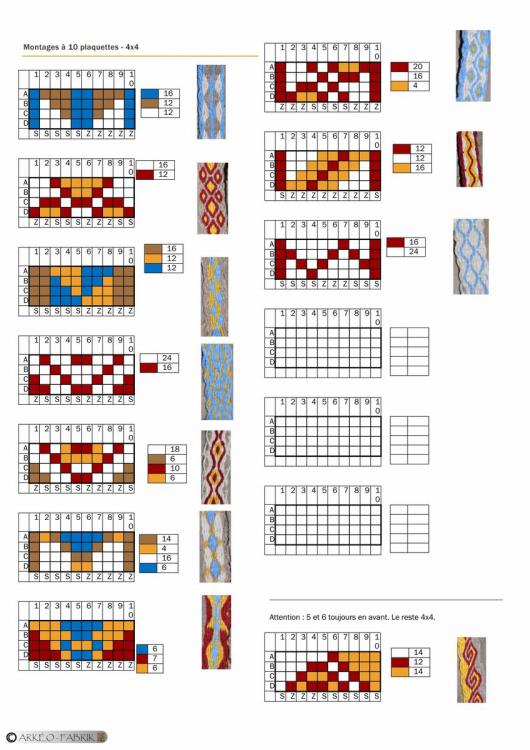
Share this:
It is based on an archeological proposal by Hubert Masurel:
https://www.persee.fr/doc/pica_0752-5656_1983_num_1_1_3009
There is also:
-
 2
2
-
-
On 6/16/2018 at 6:30 PM, Lion.Kanzen said:
You can discuss here:
Thanks a lot and sorry for the mess.
On 6/16/2018 at 6:24 PM, Lion.Kanzen said:I open a topic in referente subforum. hiere you can post as you wish.
Here we are discuss texturas only, not 3D art. if you ares talking of shield shape, this isn't the topic.
-
 1
1
-
-
7 minutes ago, Lion.Kanzen said:
Can be more specific, I mean post images here in forum, I can't access for unknown reasons
Well, I don't know where to start. But firstly I noticed you are using osprey illustrations and random archeological finds taken on different websites. The problem with osprey illustrations is that they are often very old and based on very insufficient sources. For exemple, there is often anachronistic choice in Angus McBride's illustrations, mixing items from the early LaTène and the Late LaTène periods. There is even an illustration of a helvetian warrior from him where he used Hallstatt and Bronze Age material to describe a scene occurring in 100BC:
https://i.pinimg.com/originals/73/11/4d/73114d9147321363aaab4cbe6884c5c1.jpg
Another example, one previously posted:Spoiler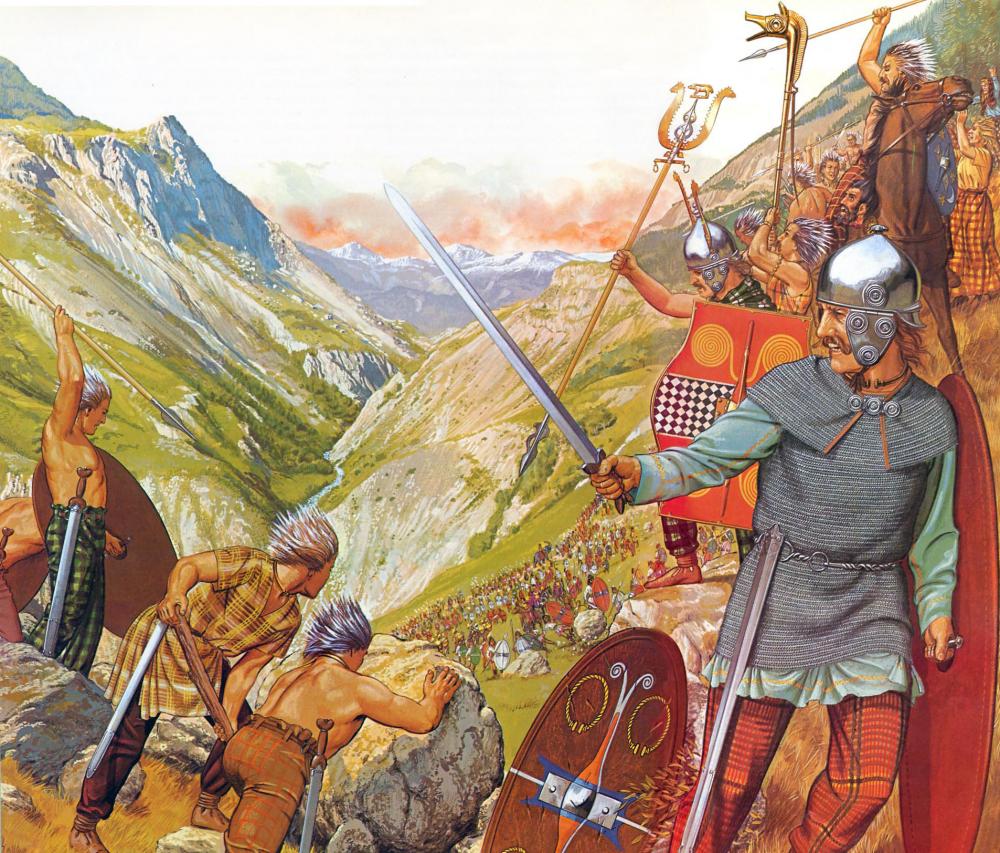
You can see a strange shield used by standard-bearer. It is actually based on a stele from Bormio made by peoples of the Golasecca culture around 500BC. The scene is depicting the Hannibal's army crossing the alps in 218BC and the reaction of a Gallic tribe (the Allobroges or the Taurini probably). Not very accurate.
The other thing is that Osprey illustrations often depicts round shields on Gallic warriors. But there is absolutely no evidence of round shields in La Tène culture. Maybe it has existed among the insulars celts (Britain and Ireland) but not in the continent.
-
Hi,
I see you struggle to get accessible documents about La Tène culture. I propose to help you a bit.
If you want an accessible material, there is page from someone working for museums and historians to make re-enactment items:https://www.facebook.com/franck.archeoart/photos
Don't forget there is an evolution of the armament, even in a barbarian culture:
https://i.pinimg.com/564x/73/ba/69/73ba696b81a206fa9b985bd012602891.jpg
https://swordmaster.org/uploads/2016/cassaselvatica/la-tene-a1.jpg (La Tène A - 500 - 400 BC)
https://swordmaster.org/uploads/2016/cassaselvatica/la-tene-a2.jpg (La Tène A - 500 - 400 BC)
https://swordmaster.org/uploads/2016/cassaselvatica/la-tene-b.jpg (La Tène B - 400 - 300 BC)
https://swordmaster.org/uploads/2016/cassaselvatica/la-tene-c.jpg (La Tène C - 300 - 150 BC)
https://swordmaster.org/uploads/2016/cassaselvatica/la-tene-d.jpg (La Tène D - 150 - 30 BC)
Your welcome.
-
 1
1
-
-
Eluveitie did a lot of songs in ancient Gaulish. I think you can just re-use their lyrics, maybe just asking to Chrigel (singer and writer of the band).
Example:
-
 1
1
-
-
Would either of these buildings make a good basis for a Celt "temple" in the game?
The general form of a gallic sanctuary is a delimited area with one or several huts/cabines to keep the votive gifts (weapons, jewels, woodden statue etc.). In addition, it can has some sacrificial monument (holes in the ground for the food, and animals or even condemned persons; scaffolds for the heroic dead warriors and their weapons like at Gournay-sur-aronde) and some places for banquets like at Corent.
http://www.gournaysuraronde.com/images/sanctuaire/maquette.jpg
http://www.gournaysuraronde.com/images/sanctuaire/reconstitution-sanctuaire.jpg
Two animation videos:
http://www.court-jus.com/film.php?id=28&type=15
http://www.court-jus.com/film.php?id=29&type=15
Illustrations in a paper(journal) about Corent, the oppidum and the sanctuary, near of Gergovia:
http://img39.imageshack.us/img39/4983/sanctuaryofcorent.jpg
http://img18.imageshack.us/img18/916/luernfest.jpg
Woodden statue, found near the lake of geneva:
http://notrehistoire.ch.s3.amazonaws.com/photos/2010/08/de0334d0108f4481_jpg_200x200_upscale_q85.jpg
http://notrehistoire.ch.s3.amazonaws.com/photos/2010/08/c494b1286c9505da_jpg_200x200_upscale_q85.jpg
Thus if you need to keep one of these models, I think the second building is better for a sanctuary, it misses simply an enclosure and some religious amenagements. The house is a bit too huge but it isn't really bad.
-
How about making this a barbarian thing? I mean, druids did often take special care of nature, and it could be a sort of spell or something that makes him pop a few seeds out of his pocket (or from the nearest villagers ear for that sake) and plant a few trees.
No... Gallia was more deforested than the France today. The Druids weren't hippies naturalists, there was some sanctuaries during the Celtic LaTene. A model made by Ealabor for a m&b mod, based on the Sanctuary of Corent:
-
Just to help the historians about the Celts/Germans, there are some previews really detailled here:
http://www.twcenter.net/forums/showthread.php?t=337587
http://www.twcenter.net/forums/showthread.php?t=347334
http://www.twcenter.net/forums/showthread.php?t=351425
http://www.twcenter.net/forums/showthread.php?t=352002
http://www.twcenter.net/forums/showthread.php?t=413770
http://www.twcenter.net/forums/group.php?do=discuss&group=&discussionid=1367
And for Carthage:
http://www.twcenter.net/forums/showthread.php?t=401193
Good day and good luck.
-
The Gaulish martial vocabulary (source: Gaulish Dictionnary)
- Atectos (peasant)
- Acuadreti (fast skirmisher, with light javelin which can reach 80 meters)
- Batoros (striker)
- Gaisatos (javelinman)
- Talmori (slinger)
- Saitoros (bowman)
- Anandogna (foreigner)
- Andogna (native)
- Bagauda (peasant-warrior)
- Iouincos (young warrior)
- Excingos (attacker, litt."out of the troop")
- Bariouic (angry warrior)
- Ambactos ("servants" => guard)
- Cingetos (warrior)
- Uercingetos (super-warrior)
- Solduros (elite guard)
- Argos (hero, champion)
- Comargos (fighting comrade)
- Arios (prince, noble)
- Cauaros (giant, hero)
- Corionos (war chief)
- Corios (army)
- Brennos (général)
- Gaisaredos (mounted javelinman, on a horse)
- Essedon (chariot)
- Eporedia (cavalry)
- Eporedos (cavalryman)
- Rigeporedia (royal cavalry)
- Nauson (ship)
-
Er, poor informations...
It's just a small summary:
-
As for the weapons, I guess I'm not interested enough to tell different swords etc from each other, so I'll let the team members who are more interested in that kind of details reply in more detail about it. In general I guess that the small models in our game aren't detailed enough to show too small differences, but if you find any major things (like a certain unit type not being used in the time period etc) please tell us.
Okay, I know for the too smalls details.
For the types of warriors, I can say that the Gallic used at least three types of javelins. A short javelin with a great blade, used by the heavy infantry to pierce the shields. A middle javelin, which can be used as spear, used by the light infantry. And a light javelin thrown by a thin strap of leather, used by the skirmisher and which can reach 80 meters.
The elite warrior used a large shield, a spear and a sword. He carried a helmet and either a leather armor or a chain mail. He is generally in first line and he is followed by warriors less equipped (no armor and no helmet) but with a longer lance. The stripped/naked troops are generally troops of fast attacks, they use javelins and spear (and sometimes sword). Their shields are lighter.
For the cavalry, in Gaul, they have no round shield. The cavalry of the Gallic War was entirely made of aristocrats.
If you want see the equipment:
www.archeoart.org
Some examples of shield:
http://www.archeoart.org/bou-v4.html#
A example of leather armor:
http://www.archeoart.org/cuirv2.html#
A great blade of spear:
http://www.archeoart.org/ah-v6.html#
A normal blade of spear:
http://www.archeoart.org/ah-v1.html#
A sword and scabbard (all the Gallic swords have iron scabbard):
http://www.archeoart.org/ef-v10.html#
http://www.archeoart.org/ef-v9.html#
really liked the comic strip, I don't understand a lot of French but I liked lines like "Encore un effort!"I am content that you like that.
 If you want translate the French, you can use: http://www.systranet.fr
If you want translate the French, you can use: http://www.systranet.fr -
Hello,
Thanks guys

To feneur, I posted the pictures of the salt mine and others production centers to give an example of the means which the Celts used to work. And if the Celtic walls are rights, the Gallic houses are wrongs. In Gaul the houses are not "round". I know, in Britannia many houses were rounds but the Gaul is really different. You can see those pictures:
http://img266.imageshack.us/img266/7138/qu...sanaldebibr.jpg
http://img36.imageshack.us/img36/1791/ferm...ifiedepaule.jpg
And for the armament, in French we have a specialist (André Rapin) and he made a great job on the Celtic continental weapons but to the Britannic Celts, I don't know any specialist. Barry Cunliff has made a poor work on the weapons. You can read the first link of my previous post, it's a summary of a work of André Rapin. Just a question, your Celts are of which period? The Gallic Wars?
The pictures of the French comic book show a battle between Senones and Bellovaci in 230BC.
And now, I make a word of thanks to all those people who work on this game. You make a GREAT job, good luck guys!
-
Do you like my post?
I want just help.
-
The sword on the left side? Why?
-
Spear in Gaulish is "Lancia". Pronounced "Lankia".


.thumb.jpg.b21ca1d0c15fb56b42c39b25a0a40815.jpg)
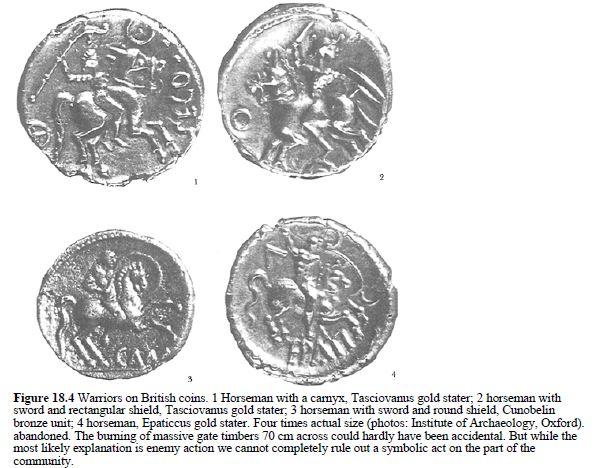
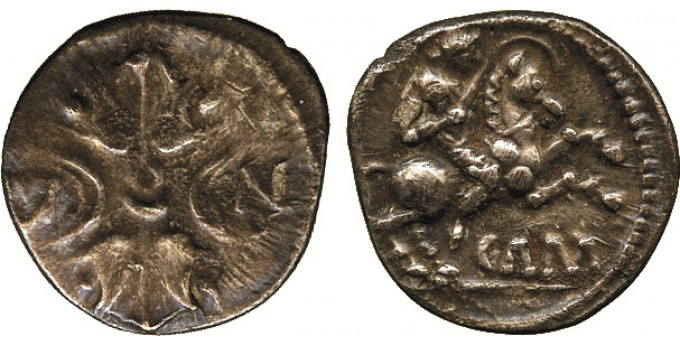
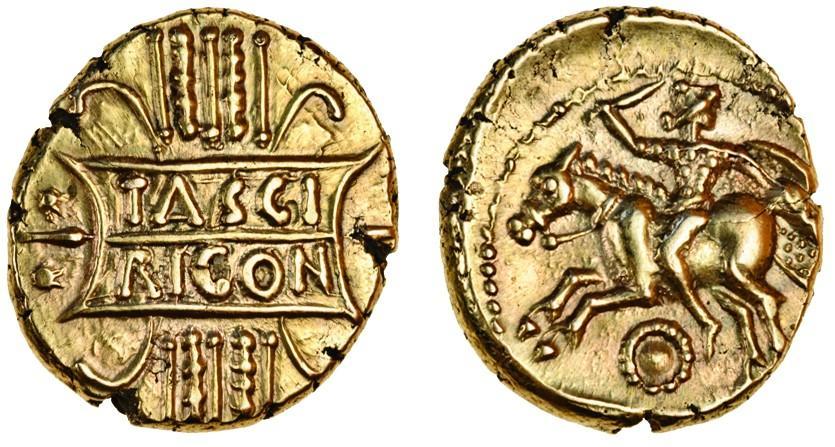
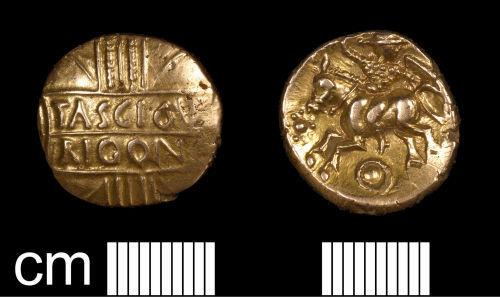
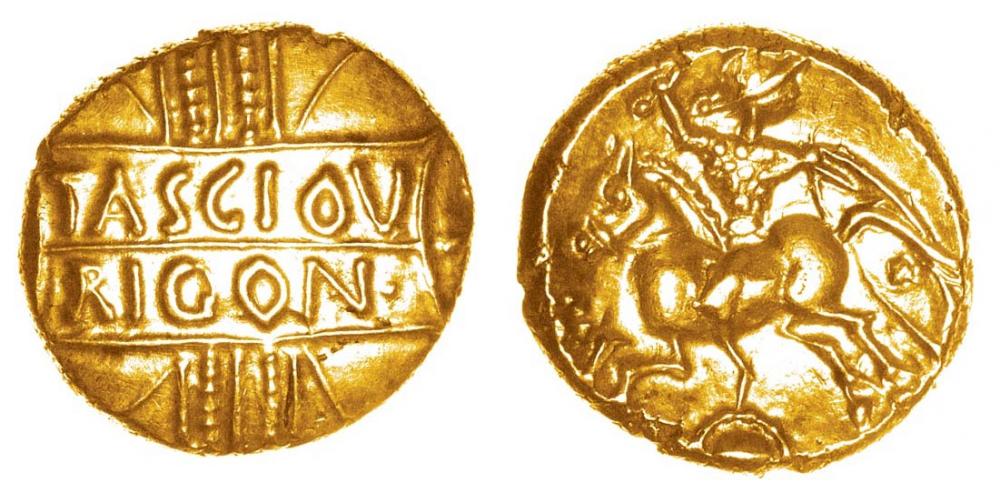
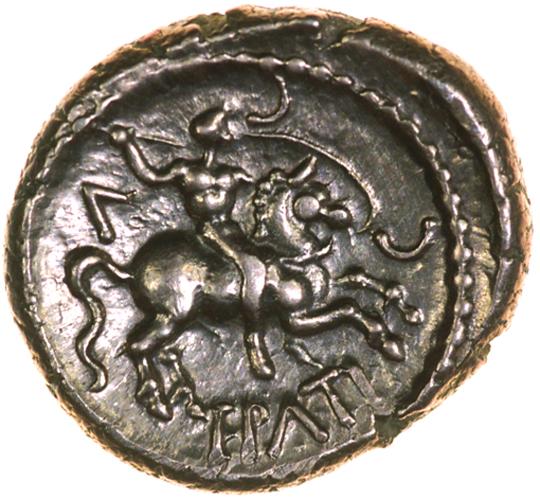
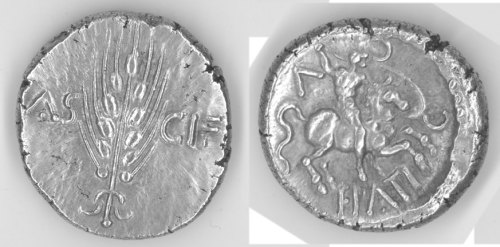
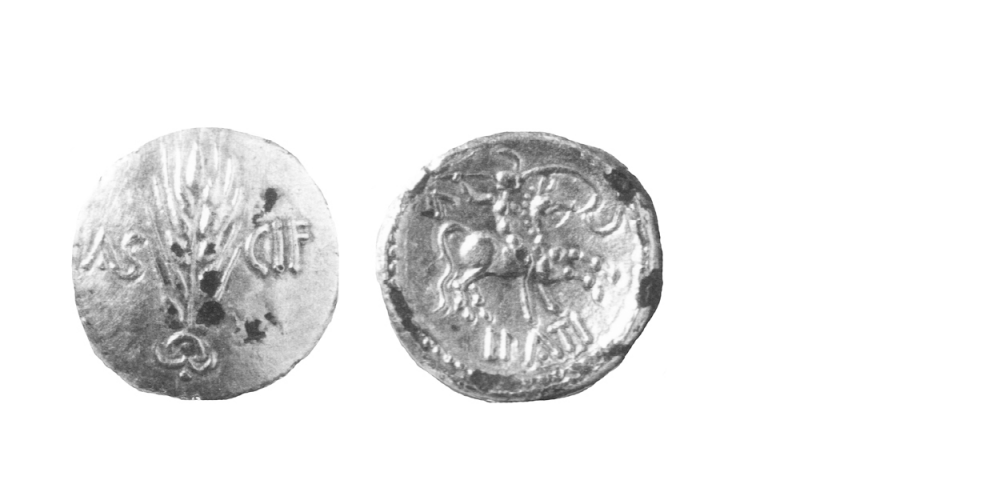
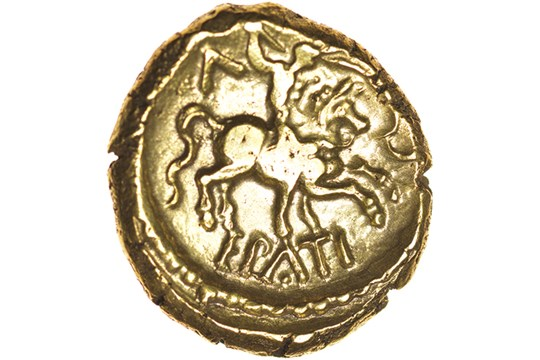
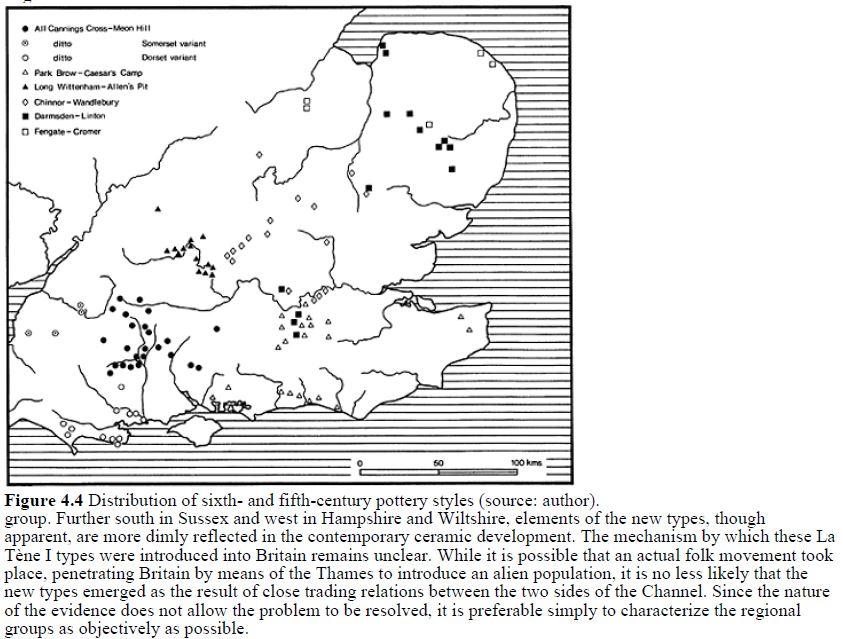
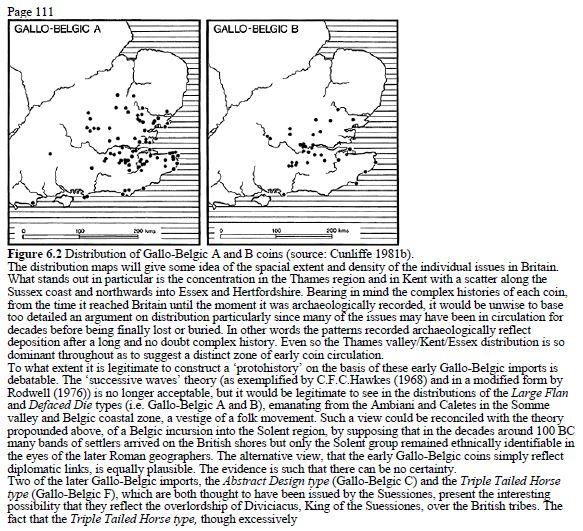
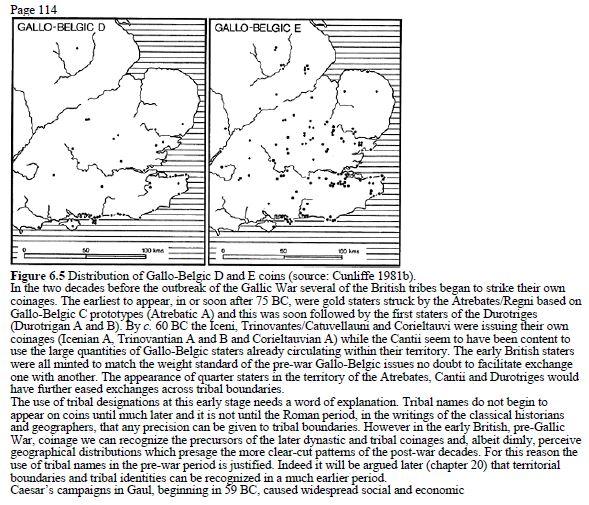
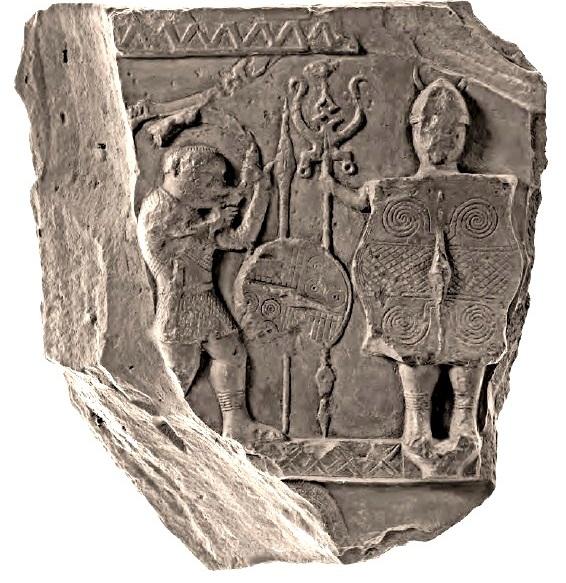
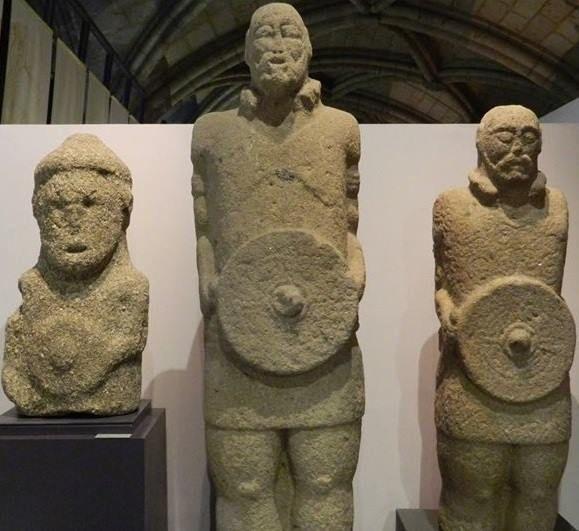
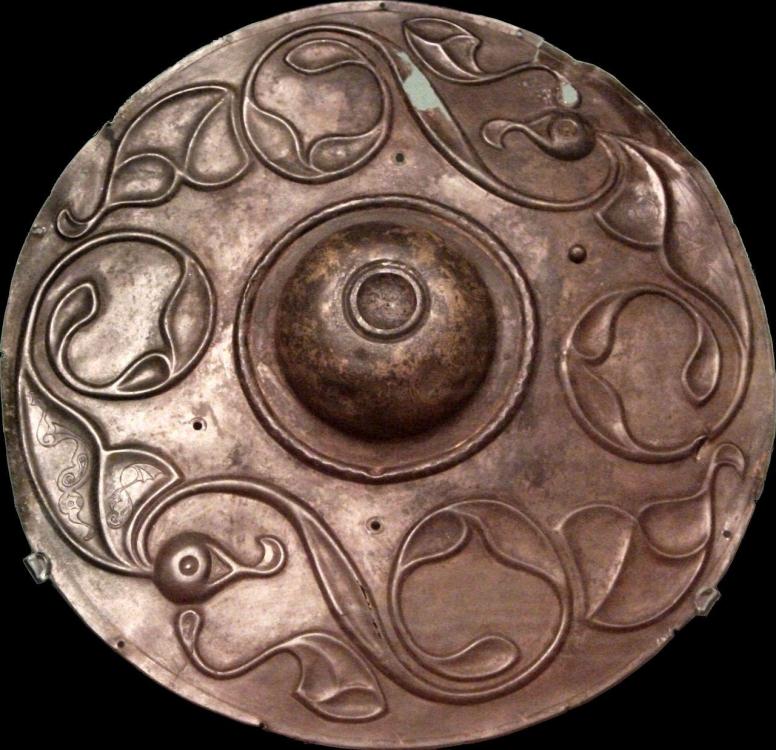
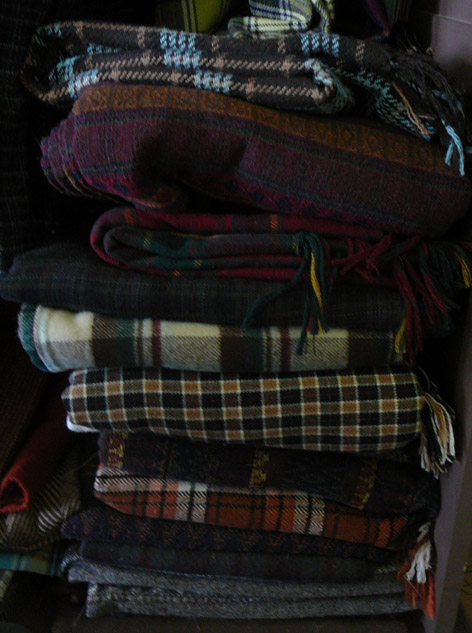
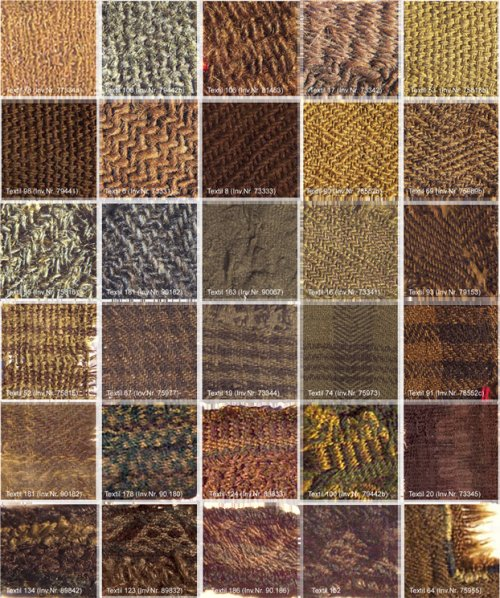
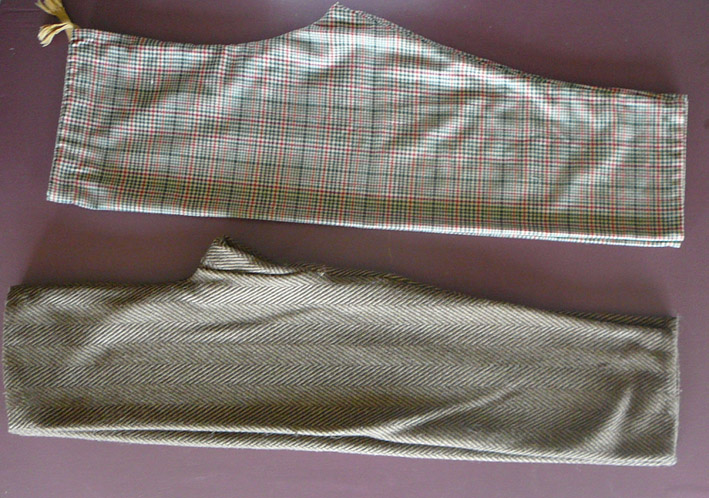
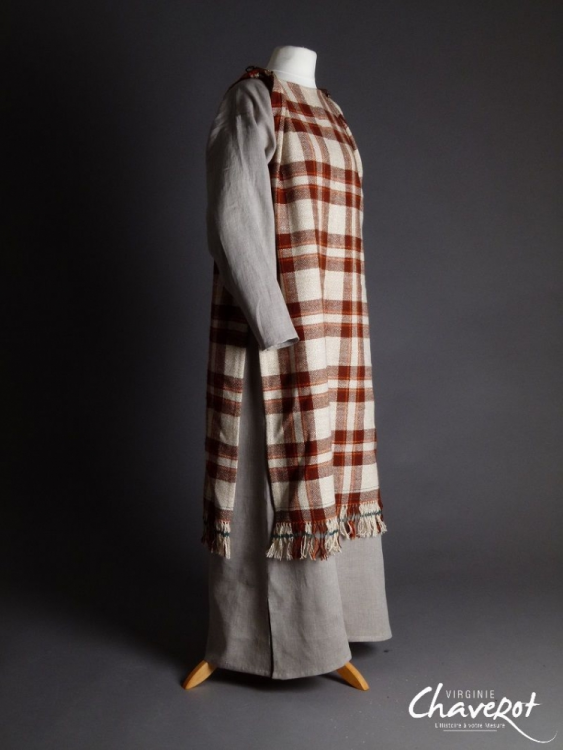
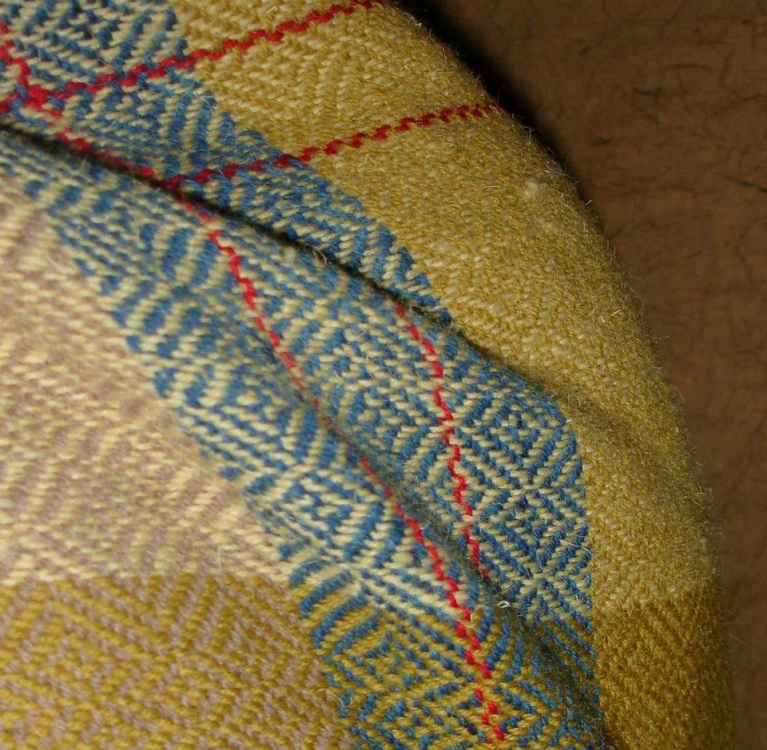
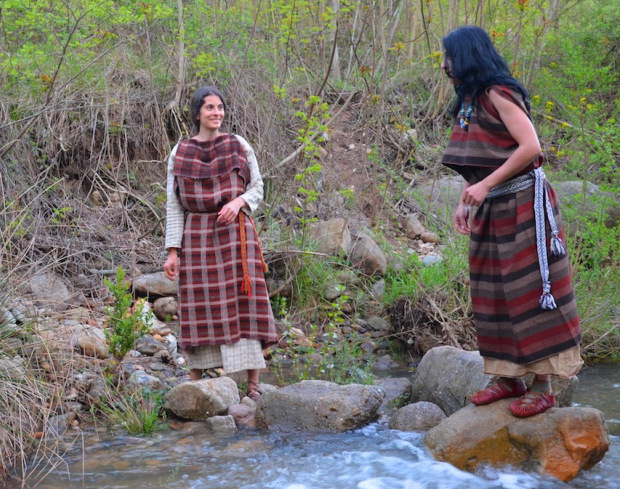
celtic reference
in Tutorials, references and art help
Posted · Edited by Genava55
I know it is a common translation. I'm not a specialist in linguistic, I use only the gallic dictionary of X. Delamarre. What is your opinion with name like augustodurum?
And about octodurus, do you know why Caesar described it as a vicus? And why its name was changed to forum claudii augustii?
-----------
I use this as a draft holder:
Inclusion of regional differentiation for Celtic factions
Opening a new thread instead of flooding the one concerning the rework of the Britons.
Stan asked me if it was possible to have technologies specific to the tribes, I include in this suggestion any regional characteristics that could be used, including from neighboring cultures.
I already made a similar suggestion in the past concerning some regional units, notable a Lepontian axeman and a Rhenish anti-cavalry horseman. Although maybe it is a good opportunity to open-up a new thread with various similar ideas that could work for the Gauls or for the Britons:
- Lepontian/Lepontii, unique axeman unit
The Lepontii are a people characterized in particular by the culture of Golasecca, a Celtic culture that preceded the arrival of the culture of La Tène during the 5th and 4th centuries. This people have kept unique characteristics despite the influence of the culture of La Tène and also shares some specificities related to weaponry with their Rhaetian neighbors. Notably some unique helmets and a local type of axe:
http://www.rupestre.it/valcamonica_rupestre/img/img093.JPG
http://www.rupestre.it/valcamonica_rupestre/img/img114.JPG
http://www.rupestre.it/valcamonica_rupestre/img/img108.JPG
- Treveri/Treverian, cavalry tech bonus + agrarian tech bonus
De Bello Gallico: By all these circumstances the cavalry of the Treviri were much alarmed, (whose reputation for courage is extraordinary among the Gauls, and who had come to Caesar, being sent by their state as auxiliaries)
[...]
This state is by far the most powerful of all Gaul in cavalry, and has great forces of infantry, and as we have remarked above, borders on the Rhine. In that state, two persons, Indutiomarus and Cingetorix, were then contending with each other for the supreme power; one of whom, as soon as the arrival of Caesar and his legions was known, came to him; assures him that he and all his party would continue in their allegiance, and not revolt from the alliance of the Roman people, and informs him of the things which were going on among the Treviri. But Indutiomarus began to collect cavalry and infantry, and make preparations for war, having concealed those who by reason of their age could not be under arms, in the forest Arduenna, which is of immense size, [and] extends from the Rhine across the country of the Treviri to the frontiers of the Remi.
Outside of this testimony by Caesar of their value, the territory of the Treviri has a long tradition of cavalry burials starting from the late La Tène period to the early principate (as auxiliaries).
------------------------------
The famous reaper seems to have specifically emerged in Eastern-Gaul, around the territories of the Treveri, probably due to the climate and of a particular kind of crop. So maybe the tech can be moved to give them something unique in addition:
- Nervii / Nervian, infantry tech bonus or/and anti-cavalry tech bonus
- Eburones, skirmishers and guerrilla tech bonus
I need to find back all the references from Caesar, skirmishing and missiles mentions are frequent.
- Belgians / Belgic / Belgae, combination of Eburones and Nervii bonus mentioned above.
- Armorican or Veneti, bonus for navy and bonus for forts
The well-known mentions by Caesar of the Armorican fleet (https://fr.wikipedia.org/wiki/Guerre_des_Vénètes)
The particular fort of Paule, inside the oppidum:
- Aquitani